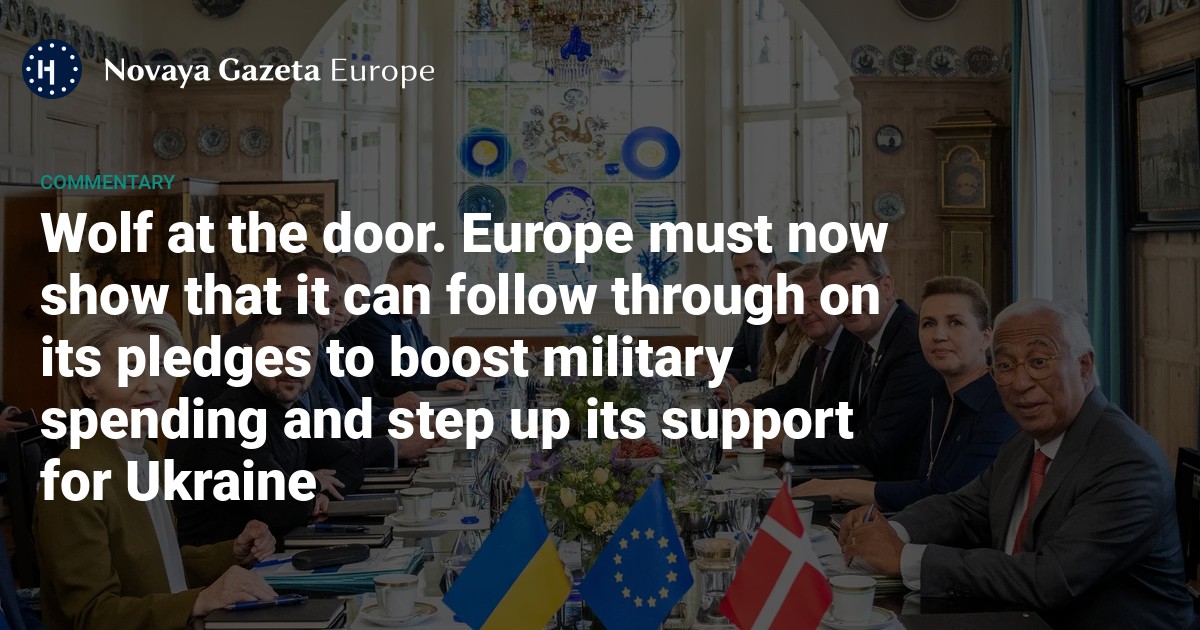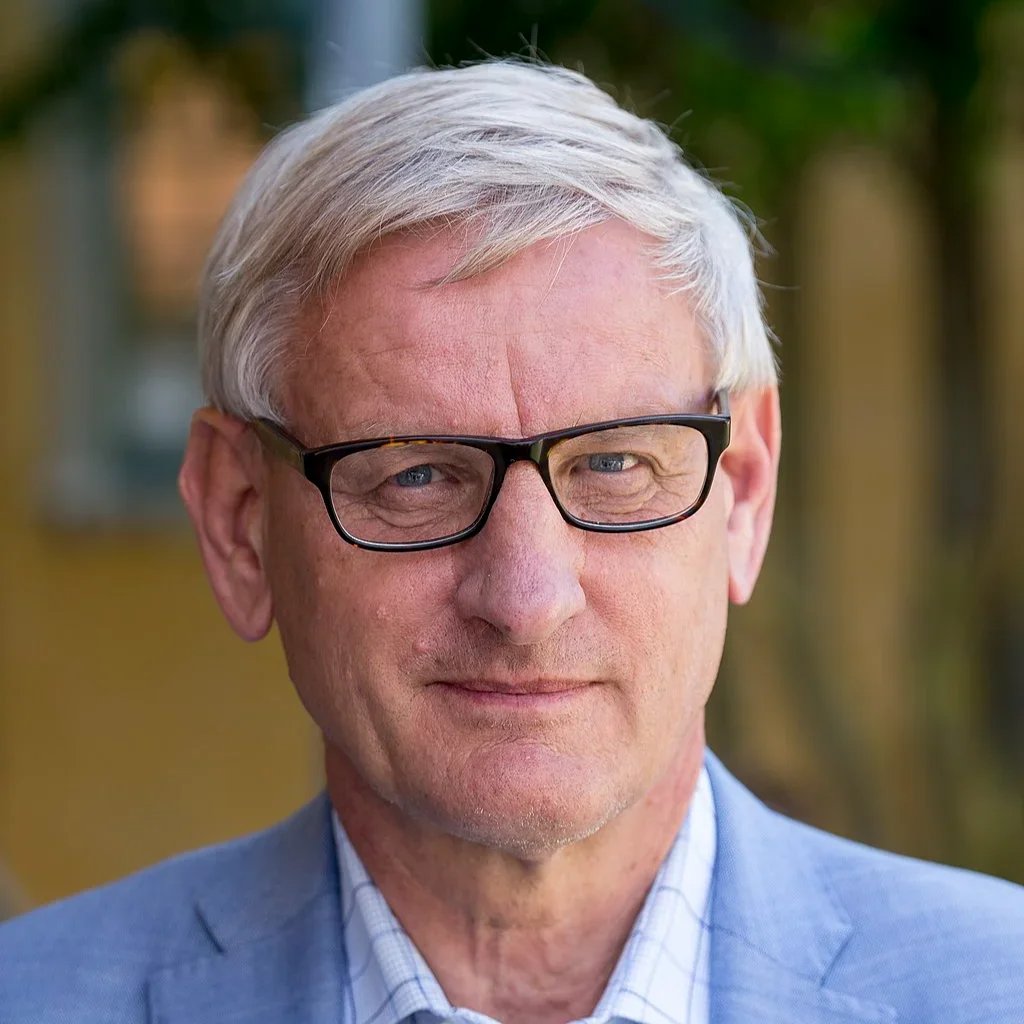



“Money makes the world go around,” sings the showgirl Sally Bowles in Cabaret, the iconic musical set against the backdrop of the Weimar Republic’s decadence. Money will certainly shape Europe’s future, as political leaders across the continent are forced to make painful decisions about how to allocate public funds in an increasingly unstable world.

Carl Bildt
Former Swedish prime minister and foreign minister
Three urgent priorities are set to strain Europe’s public finances over the next few years. The first — and most obvious — is defence. The push to boost military spending is primarily a response to Vladimir Putin’s aggression, compounded by US President Donald Trump’s relentless criticism of America’s NATO allies. Together, these pressures have made strengthening Europe’s defence posture a strategic necessity.
The second, and arguably more urgent, priority is to support Ukraine in its fight against Russia. If Ukraine’s defences were to collapse, a revanchist Russia would likely go on a rampage. Ensuring that Ukraine can continue to defend itself will require European governments to go beyond their existing defence-spending commitments.
And lastly, there is the lengthy process of producing the European Union’s next multiyear budget, which will cover the period from 2028 to 2034. The European Commission has already presented its proposal, but the real challenge lies ahead, as member states and the European Parliament must go through internal negotiations before agreeing on the final numbers.
Supporting Ukraine through the war and the country’s eventual reconstruction will also require a substantial financial commitment.
The commission’s proposal includes increased funding for security, global commitments, and competitiveness, as well as additional support for Ukraine. Although these priorities have been widely supported, the reallocation of resources needed to fund them has been the subject of fierce debate. It is safe to say the commission is headed for a bruising political showdown before a consensus is reached.
Despite the intensity of these budgetary battles, the commission’s proposed budget amounts to just 1.26% of the combined gross national income (GNI) of the EU’s 27 member states. While that is up from 1.13% today, the net increase is relatively modest once debt-servicing costs from the bloc’s post-pandeemic borrowing spree are factored in.
When it comes to defence, however, the numbers are far more significant. Across Europe, defence budgets have grown by roughly one third in recent years, with most of NATO’s European members spending around 2% of their GDP or nearing that benchmark.
But even that is no longer enough. At the June NATO summit in The Hague, members pledged to spend 3.5% of GDP on defence by 2035, with an additional 1.5% earmarked for loosely defined defence- and security-related investments. The extra 1.5% appears designed to appease Trump, who has repeatedly called for European allies to boost military spending to 5% of GDP. Much of this additional spending is expected to rely on creative accounting rather than actual new funding.
Supporting Ukraine through the war and the country’s eventual reconstruction will also require a substantial financial commitment. While estimates vary, $100 billion per year, for example, would amount to just over 0.4% of the combined GDP of the EU and the United Kingdom — significant but far from unmanageable.
At some point within the 2028-35 budget window, the cost of rebuilding Ukraine will need to be addressed. Some studies have estimated the cost of reconstruction at around $500 billion, though this figure includes areas that may remain under Russian control for the foreseeable future. Much will also depend on whether security guarantees and the prospect of Ukraine’s EU accession can foster an environment conducive to large-scale private investment.

Ukrainian rescuers work at the site of a glide bomb strike in Kharkiv, northern Ukraine, 25 July 2025. Photo: EPA/SERGEY KOZLOV
Of course, new demands may emerge, placing additional strain on Europe’s finances. Several European governments, for example, have already slashed development aid or diverted part of it to support Ukraine. While this may have been a necessary short-term response to Russia’s invasion, its long-term consequences remain unclear.
Currently, only Norway, Sweden, and Denmark meet the United Nations target of allocating 0.7% of GNI to development assistance. Following the Trump administration’s dramatic foreign-aid cuts and the shutdown of the US Agency for International Development, there is a strong case for Europe to fill the void. A more desperate world will be more volatile and less secure, making development a strategic imperative as well as a moral one.
Meeting all of these commitments will not be easy, especially for governments already grappling with high deficits and rising public debt. My guess is that northern European countries will reach NATO’s 3.5%-of-GDP defence spending target well before 2035, while southern European countries — with the exception of Greece — will likely fail to meet it. With France, Italy, and Spain all heading for elections by 2027, the political appetite for the spending cuts needed to increase defence budgets will likely remain limited.
There is a stark contrast between NATO’s swift approval of large spending pledges and the EU’s wrangling over far smaller amounts.
This trend is already evident in the distribution of aid to Ukraine. In the first four months of 2025, the Nordic countries contributed $6.8 billion, the UK provided $5.3 billion, and Germany put up $760 million, while Spain and Italy gave only a fraction of those amounts.
The irony is that the EU member states often labelled as “frugal” are the ones actually willing to provide funding to advance the bloc’s agreed-upon priorities. Meanwhile, the less frugal countries prefer to call for more borrowing, even though they have limited room to do so themselves.
These tensions are now driving the intensifying battle over Europe’s finances. There is a stark contrast between NATO’s swift approval of large spending pledges and the EU’s wrangling over far smaller amounts. Whatever the outcome, the coming fiscal fight will test how able and willing Europe’s leaders are to confront the serious security challenges ahead.
This article was first published by Project Syndicate. Views expressed in opinion pieces do not necessarily reflect the position of Novaya Gazeta Europe
The Russian government has banned independent media. We were forced to leave our country in order to keep doing our job, telling our readers about what is going on Russia, Ukraine and Europe.
We will continue fighting against warfare and dictatorship. We believe that freedom of speech is the most efficient antidote against tyranny. Support us financially to help us fight for peace and freedom.
By clicking the Support button, you agree to the processing of your personal data.
To cancel a regular donation, please write to [email protected]
VPNovaya
Help Russians and Belarusians Access the Truth
